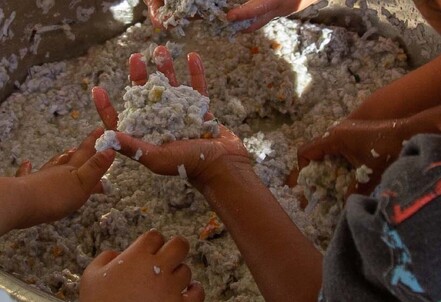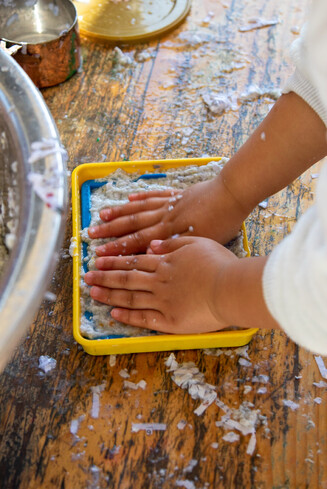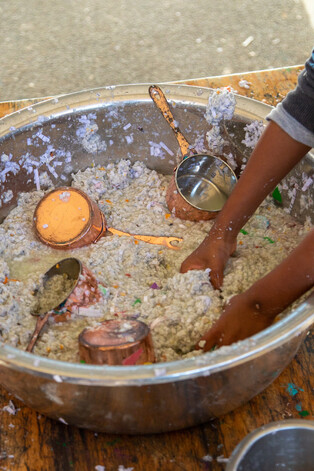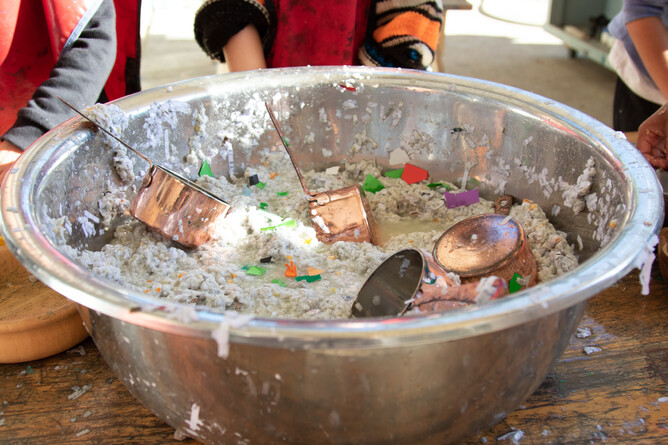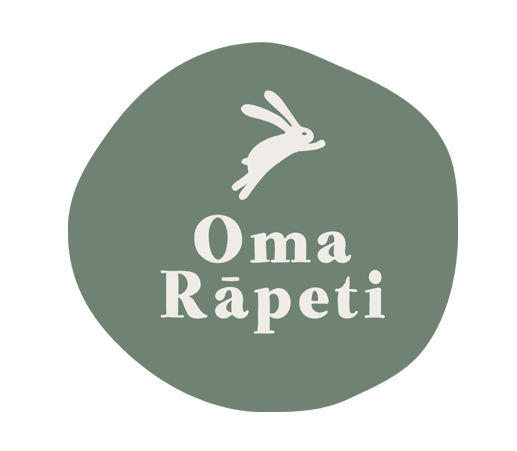Messy play. Korihori pōrehe.
Two simple words that have the incredible capacity to make both parents and educators either recoil in horror, or jump for joy.
Why do we intentionally let our littlies (and our homes/classrooms!) get covered in filth?
Utter madness? Crazy ECE teachers? All in the name of fun? For the love of wet-wipes and soap?
As much as we do love a bit of madness, messy play (also known as sensory play) can do wonders for your child’s brain development - so it’s all in the name of science, really.
More than a mess
When we say ‘messy play’, it doesn’t have to mean glitter and slime from ceiling to floor. In fact, we prefer to embrace nature as much as possible - you can absolutely provide rich learning experiences using sustainable and natural resources, without a speck of glitter (aka, mini plastic) in sight!
Papatūānuku gives us endless options - there’s no need to fill our drains with plastics and nasties. There are plenty of eco-friendly options that work, while still respecting the beautiful land of Aotearoa.
The first step? Head outdoors and see what you can find! Dried petals can be used for confetti, leaves can be dried and punched with a hole-punch, dirt can be mixed with water for good old fashioned “mud pies”...not a gram of plastic to be seen.
Children can get stuck into their sensory exploration with a range of resources. Try sand, mud, water, soap foam, or fingerpaint. When we allow our little ones to take the lead with open-ended resources the opportunities for learning are endless.
Another bonus?
Messy play is an activity that can be embraced both indoors and out, at the table, on the floor or even in the bath.
**Insider secret: We often find that adults end up enjoying the experience just as much as our tamariki.
As children build new layers of complexity into their play, they create new brain pathways and connections.
As parents, we all get excited when we see our children learn new skills and reach developmental milestones.
Research has shown that sensory play does exactly this - builds incredible brain connections and stimulates cognitive development.
Cognitive development...sounds fancy, what does that mean?
To break it down, cognitive development is the way your child thinks and makes sense of the world.
Sensory and messy play experiences offer children the opportunity to explore with all of their senses - how does it look, how does it feel? Smell? Taste? Does it make a sound when you tip it, pour it, or smoosh it between your fingers?
As they experience these things their brains are essentially creating a blueprint for future learning. The skills of exploration paired with the sensory experiences that come with this type of play will be what their brains refer to when they are learning to do more complex skills such as writing, building, and painting.
We know that children learn through play; messy play is no exception. The thousands of little messages that are zipping around their brains at every second are creating, growing, expanding, and developing at an incredible rate.
Here’s a tiny peek inside what that messy play is doing!
- Helping a child learn to write: Fine motor skill and pincer grip development gear up tiny hands for holding pens and pencils.
- Developing working theories: Using all of their senses, and drawing on lived experiences, children combine sensory play with physical abilities to make sense of the world around them.
- Teaching mathematical concepts through: Tipping, pouring, and measuring helps our tamariki develop their spatial awareness.
This is what their brains will refer to when they are learning to do more complex skills such as writing, building, and painting.
Don’t throw messy play into the too hard basket - embrace the mess.
Little hands, lots of laundry, and language acquisition.
Sensory play may create a bit of extra washing, but it’s also an excellent time to engulf your tamariki in language-rich experiences. While they are doing all the “text-book” sciencey work such as mixing, measuring, and experimenting with different textures and types of matter, you can have rich discussions about what they are learning.
Even with infants, we can use adjectives galore as they explore their senses to help them describe and understand what they are experiencing. Add colour, temperature, and measurement concepts, and you have the perfect recipe for enhancing communication skills.
This is a beautiful way to also incorporate non-verbal communication - using gestures, facial expressions, and sign language to make those nerve connections in the brain we spoke about above.
Send those neurons flying by trying some of the following age-appropriate suggestions;
- Infants can enjoy splashing and exploring with water in different settings - always stay close and attentive around water. Digging little toes into sand and mud can help with developing awareness of different textures and environments.
- Watch little eyes light up in the summer months when tiny tots are stripped down to a nappy and given the freedom to paint with their whole bodies - fine art canvases to be displayed in the finest of galleries!
- Toddlers love squelching and squishing different things between their fingers. Young children, and toddlers, in particular, can have high emotional needs - messy play can calm and soothe, ultimately promoting their emotional well-being.
- Adding colours and utensils to your experiences is a wonderful way to enhance the language development opportunities - what can they tell you about what they are experiencing?
- As our toddlers grow into kindergarten age, communication skills are often increasing at a rapid rate, and questions are coming from every angle as they make sense of the big world they live in. These questions are again making those brain pathways - a sensory experience (messy play) can create so much discussion.
- They may be able to draw familiar shapes, letters, and numbers in the slime, gloop or mud. You could turn messy play into a two-part learning experience for these children - how can they use this resource again in the future? At Oma Rāpeti, we often make our own paper with the children - you can find the recipe here.
As for washing up afterwards? Little hands make great helpers, and as they wash, splash and rinse you can do it all over again!
Have a go at setting up your own sensory/messy play experiences for your child. Chat about their senses, and what they’re feeling! Embrace the mess as their eyes light up and their brains make those important connections.
You can follow us on Facebook here for more ideas and examples of messy play experiences.
In the name of science!

